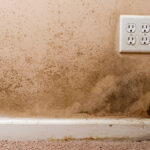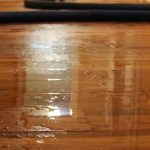Mould in homes can be a costly and dangerous problem, particularly when infestations of toxic black mold occur. The symptoms and health effects of black mold exposure and black mold poisoning cover a wide range of health problems, but understanding the indicators can help keep you and your family safe.
Toxic black mold, or Stachybotrys chartarum, as it’s known to scientists, can release spores as it feeds on organic materials in common household materials like drywall, carpet, insulation or sub-flooring that have been exposed to moisture. These spores, if ingested or inhaled, can cause a range of unpleasant and even dangerous symptoms in humans.
Mould Symptoms and Health Effects
The most common black mold symptoms and health effects are associated with a respiratory response. Chronic coughing and sneezing, irritation to the eyes, mucous membranes of the nose and throat, rashes, chronic fatigue and persistent headaches can all be symptomatic of black mold exposure or black mold poisoning.
In particularly severe cases of prolonged exposure, black mold health effects can be more dangerous. Often compounded by an allergic reaction to the black mold spores, these symptoms can include nausea, vomiting, and bleeding in the lungs and nose.
Toxic black mould can be costly to remove, and black mould exposure and black mould poisoning can cause a wide range of health problems, some of them severe. Understanding black mould symptoms and health effects can help you and your family identify these indicators and take swift action to protect your health and your home. We are certified experts in several applications, including:• Water damage restoration
• Fire and smoke damage restoration
• Emergency board-up service
• Wind and hail damage restoration
• Building climate control heating and cooling
• HVAC decontamination
• Odour removal
• Mould removal
• Environmental remediation
• Reconstruction services
• Equipment rental










